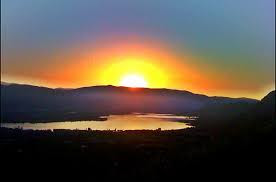CO2 dip may have helped dinosaurs walk from South America to Greenland
Climate shift may have aided herbivores on a 6,500-mile trek

IMAGE: A CLIFF IN JAMESON LAND BASIN IN CENTRAL EAST GREENLAND, THE NORTHERNMOST SITE WHERE SAUROPODOMORPH FOSSILS ARE FOUND. THE LABELS POINT OUT SEVERAL SERIES OF LAYERS THAT HELPED THE RESEARCHERS... view more
CREDIT: LARS CLEMMENSEN
A new paper refines estimates of when herbivorous dinosaurs must have traversed North America on a northerly trek to reach Greenland, and points out an intriguing climatic phenomenon that may have helped them along the journey.
The study, published today in Proceedings of the National Academy of Sciences, is authored by Dennis Kent, adjunct research scientist at Columbia University's Lamont-Doherty Earth Observatory, and Lars Clemmensen from the University of Copenhagen.
Previous estimates suggested that sauropodomorphs -- a group of long-necked, herbivorous dinosaurs that eventually included Brontosaurus and Brachiosaurus -- arrived in Greenland sometime between 225 and 205 million years ago. But by painstakingly matching up ancient magnetism patterns in rock layers at fossil sites across South America, Arizona, New Jersey, Europe and Greenland, the new study offers a more precise estimate: It suggests that sauropodomorphs showed up in what is now Greenland around 214 million years ago. At the time, the continents were all joined together, forming the supercontinent Pangea.
With this new and more precise estimate, the authors faced another question. Fossil records show that sauropodomorph dinosaurs first appeared in Argentina and Brazil about 230 million years ago. So why did it take them so long to expand into the Northern Hemisphere?
"In principle, the dinosaurs could have walked from almost one pole to the other," explained Kent. "There was no ocean in between. There were no big mountains. And yet it took 15 million years. It's as if snails could have done it faster." He calculates that if a dinosaur herd walked only one mile per day, it would take less than 20 years to make the journey between South America and Greenland.
Intriguingly, Earth was in the midst of a tremendous dip in atmospheric CO2 right around the time the sauropodomorphs would have been migrating 214 million years ago. Until about 215 million years ago, the Triassic period had experienced extremely high CO2 levels, at around 4,000 parts per million -- about 10 times higher than today. But between 215 and 212 million years ago, the CO2 concentration halved, dropping to about 2,000ppm.
Although the timing of these two events -- the plummeting CO2 and the sauropodomorph migration -- could be pure coincidence, Kent and Clemmensen think they may be related. In the paper, they suggest that the milder levels of CO2 may have helped to remove climatic barriers that may have trapped the sauropodomorphs in South America.

CAPTION
Map shows how the major continents were arranged 220 million years ago in the Pangea supercontinent. "Isch" and "P" mark locations with sauropodomorph fossils up to 233 million years old. The herbivorous dinosaurs didn't reach Jameson Land in Greenland ("JL") until about 214 million years ago.
CREDIT
Dennis Kent and Lars Clemmensen
On Earth, areas around the equator are hot and humid, while adjacent areas in low latitudes tend to be very dry. Kent and Clemmensen say that on a planet supercharged with CO2, the differences between those climatic belts may have been extreme -- perhaps too extreme for the sauropodomorph dinosaurs to cross.
"We know that with higher CO2, the dry gets drier and the wet gets wetter," said Kent. 230 million years ago, the high CO2 conditions could have made the arid belts too dry to support the movements of large herbivores that need to eat a lot of vegetation to survive. The tropics, too, may have been locked into rainy, monsoon-like conditions that may not have been ideal for sauropodomorphs. There is little evidence they ventured forth from the temperate, mid-latitude habitats they were adapted to in Argentina and Brazil.
But when the CO2 levels dipped 215-212 million years ago, perhaps the tropical regions became more mild, and the arid regions became less dry. There may have been some passageways, such as along rivers and strings of lakes, that would have helped sustain the herbivores along the 6,500-mile journey to Greenland, where their fossils are now abundant. Back then, Greenland would have had a temperate climate similar to New York state's climate today, but with much milder winters, because there were no polar ice sheets at that time.
"Once they arrived in Greenland, it looked like they settled in,'" said Kent. "They hung around as a long fossil record after that."
The idea that a dip in CO2 could have helped these dinosaurs to overcome a climatic barrier is speculative but plausible, and it seems to be supported by the fossil record, said Kent. Sauropodomorph body fossils have not been found in the tropical and arid regions of this time period -- although their footprints do occasionally turn up -- suggesting they did not linger in those areas.
Next, Kent hopes to continue working to better understand the big CO2 dip, including what caused it and how quickly CO2 levels dropped.

CAPTION
A claw of a bipedal sauropodomorph (Plateosaurus) from the Jameson Land site in East Greenland. Parts of the animal were found in 1995 by Farish Jenkins (Harvard), Neil Shubin (U Penn), Lars Clemmensen (Copenhagen), and others. It is the oldest known specimen in the area.
CREDIT
Dennis Kent
Lamont-Doherty Earth Observatory is Columbia University's home for Earth science research. Its scientists develop fundamental knowledge about the origin, evolution and future of the natural world, from the planet's deepest interior to the outer reaches of its atmosphere, on every continent and in every ocean, providing a rational basis for the difficult choices facing humanity. http://www.
The Earth Institute, Columbia University mobilizes the sciences, education and public policy to achieve a sustainable earth. http://www.

















